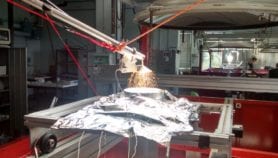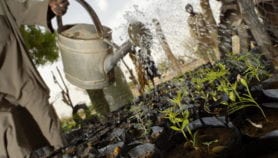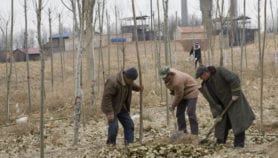By: Eva Tallaksen
Send to a friend
The details you provide on this page will not be used to send unsolicited email, and will not be sold to a 3rd party. See privacy policy.
Deserts in the Middle East and North Africa could generate vast quantities of electricity to sell to Europe, according to two German research reports.
The studies found that concentrated solar power plants, occupying less than 0.3 per cent of the desert area in the region, could provide 15 per cent of Europe’s electricity needs by 2050.
The transmission losses of 10-15 per cent over the full cable length from North Africa to Europe would be offset by the sheer volume of electricity produced, says the Trans-Mediterranean Renewable Energy Cooperation (TREC), a network that helped conduct the studies.
“Every year, each square kilometre of desert receives solar energy equivalent to 1.5 million barrels of oil. Multiplying by the area of deserts worldwide, this is nearly a thousand times the entire current energy consumption of the world,” says Franz Trieb, project manager for the two reports at the German Aerospace Center.
Solar thermal power plants use mirrors to concentrate solar energy to create steam and generate electricity, creating the cheapest electricity available — costing less than US$0.06 per kilowatt-hour.
Excess heat from the plants could be used for water desalination, providing much-needed fresh water in desert regions.
But while renewable energy from the desert is plentiful and inexhaustible, implementing such a project, estimated to cost over US$500 billion, takes time.
“It would take about 10-15 years for the countries of the region to generate enough clean power from the deserts to provide for their own local demand,” Gerhard Knies of TREC told SciDev.Net.
“Realistically they could be exporting large quantities to Europe in about 30 years.”
Knies added that all countries in the region had been contacted, with Algeria, Jordan, Libya and Morocco so far providing positive feedback.
Initial plans for constructing such plants are already under way, he said, and TREC plans to launch pilot projects, including one in Yemen costing about US$7.5 billion. If launched, desalinated water from the Red Sea would supply the city of Sana’a.
The most recent of the two studies, published on 3 May, estimates that Europe’s carbon dioxide emissions could be cut by 70 per cent by 2050 if it combined imports of clean electricity from the deserts with renewable local energy.












